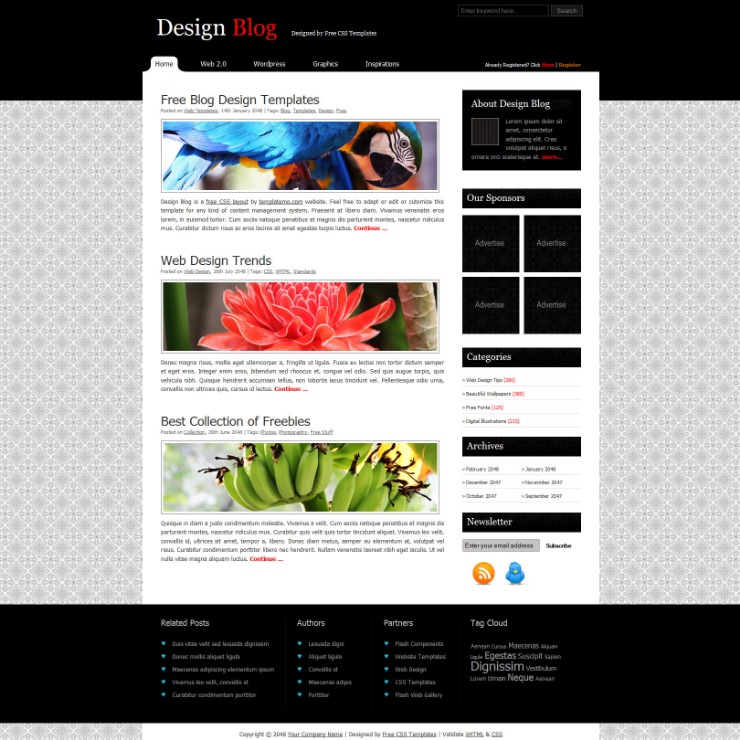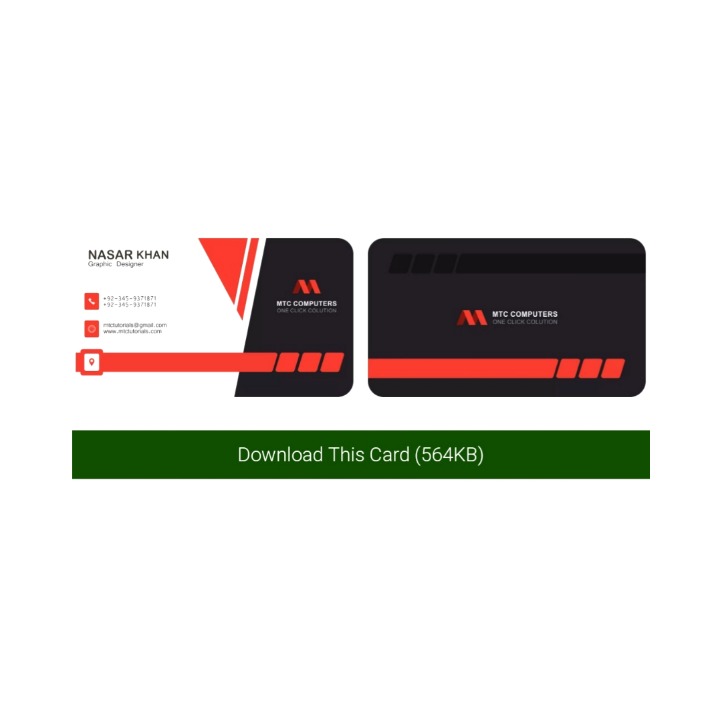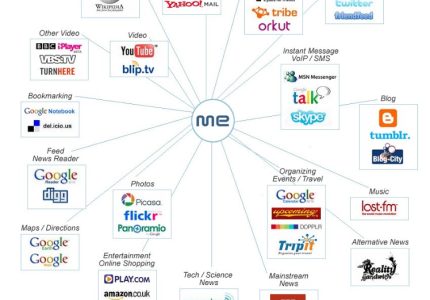Benefits of Using Free Ecommerce Website Design Templates
Utilizing free ecommerce website design templates offers numerous advantages for budding online store owners. These ready-made templates provide an affordable and efficient way to create a professional and attractive online presence without the need for extensive design skills or resources. They help streamline the website development process, allowing entrepreneurs to launch their stores quickly and focus more on growing their business. Additionally, free templates often come with customizable features that enable personalized branding, making them a popular choice for startups and small businesses looking to establish a competitive online footprint.
Cost-Effectiveness
Using free ecommerce website design templates offers significant cost-effectiveness, making it an attractive option for startups and small businesses. These templates eliminate the need for hiring expensive web designers or developers, allowing entrepreneurs to establish their online presence without a substantial financial investment. Additionally, they provide ready-made layouts that can be easily customized, saving both time and money in the website development process.
By utilizing free templates, businesses can allocate resources more efficiently, focusing on marketing and product development instead of costly design work. Many free templates are professionally designed and responsive, ensuring a visually appealing and user-friendly shopping experience across devices. This not only reduces overall costs but also speeds up the launch timeline, enabling faster entry into the market and quick adaptation to changing market demands.
Overall, free ecommerce website design templates serve as a budget-friendly solution that combines functionality, aesthetics, and ease of use, helping small businesses and startups grow without the burden of high design costs.
Time-Saving Development Process
Using free ecommerce website design templates offers numerous advantages, especially when it comes to streamlining the development process and enhancing overall productivity. These templates provide ready-made layouts and design elements that can be easily customized to fit your brand, significantly reducing the time spent on designing from scratch.
By utilizing free templates, you can avoid the complexities of web design coding and focus more on setting up your products and marketing strategies. This results in a faster launch, allowing businesses to start selling sooner and generate revenue promptly.
Furthermore, free ecommerce templates often come optimized for user experience and mobile responsiveness, ensuring your online store looks professional and functions smoothly across different devices. This saves time on additional testing and design adjustments.
Overall, leveraging free ecommerce website design templates supports a quicker rollout of your online store, reduces development costs, and helps you concentrate on growing your business rather than technical setup. Downloading these templates is a cost-effective way to establish a compelling online presence without sacrificing quality or functionality.
Variety of Design Options
Using free ecommerce website design templates offers numerous advantages, especially for businesses seeking a cost-effective way to establish their online presence. These templates provide a professional and visually appealing layout that can be easily customized to match your brand identity, saving time and effort in the design process. Additionally, they often come with a variety of design options, allowing you to select and modify layouts, color schemes, and features to best suit your products and target audience. This variety enables small businesses and startups to create a unique online storefront without needing extensive design experience or hiring costly developers, making it an ideal solution for those looking to launch quickly and efficiently.
Ease of Customization
Using free ecommerce website design templates offers numerous advantages that can significantly benefit online store owners, especially in terms of ease of customization. These templates provide a cost-effective way to establish a professional and visually appealing storefront quickly.
- Cost Savings: Free templates eliminate the need for expensive design services, making them ideal for startups and small businesses.
- Ease of Use: Most free templates come with user-friendly interfaces, allowing even those without extensive technical skills to set up their website with minimal effort.
- Quick Deployment: Downloading and customizing templates accelerates the website launch process, helping businesses go live faster.
- Pre-Designed Layouts: They provide a variety of professional layouts that are aesthetically pleasing and tailored for ecommerce that can be easily adapted.
- Flexibility and Customization: Free templates are often highly customizable, enabling store owners to modify colors, fonts, images, and layout to match their brand identity.
- Responsive Design: Many templates are mobile-friendly, ensuring a seamless shopping experience across all devices without additional effort.
- Access to Features: They typically include essential ecommerce features like product galleries, shopping carts, and checkout pages, which can be customized to suit specific needs.
Overall, free ecommerce website design templates simplify the website creation process and allow store owners to personalize their online shops efficiently, saving both time and money while maintaining a professional appearance.
Popular Free Ecommerce Website Design Templates
Discover a variety of popular free ecommerce website design templates that are perfect for entrepreneurs looking to create an attractive and functional online store. These templates offer easy customization options, modern layouts, and responsive designs to help boost your online presence without any additional cost. Whether you’re just starting out or revamping your existing site, these free downloads provide a solid foundation for a professional and user-friendly ecommerce platform.
Template A: Modern & Minimalist
Template A: Modern & Minimalist offers a sleek and clean design ideal for eCommerce websites seeking a contemporary aesthetic. Its streamlined layout emphasizes product imagery and easy navigation, enhancing user experience and encouraging conversions.
- Clean, uncluttered appearance that highlights product images
- Responsive design compatible with all devices
- Simple and intuitive navigation menu
- Pre-designed homepage sections for featured products, categories, and promotions
- Built-in support for popular eCommerce platforms
- Customizable color schemes and typography
- Optimized for fast loading speeds
fr
Template B: Classic Online Store
Template B: Classic Online Store is a popular free ecommerce website design template that offers a clean and timeless layout suitable for various online retail businesses. It features a simple navigation structure, prominent product display areas, and customizable sections to showcase products effectively. This template is ideal for those looking to create a professional and user-friendly online store without incurring additional costs. Its responsive design ensures that the website looks great on all devices, providing an optimal shopping experience for customers.
Template C: Fashion & Apparel Focused
Template C: Fashion & Apparel Focused offers a stylish and modern design ideal for online clothing stores, accessories shops, and boutique retailers. It features a clean layout with prominent product displays, easy navigation, and visually appealing banners that highlight new arrivals and promotions. This template is optimized for user experience, ensuring shoppers can browse, select, and purchase products seamlessly. Perfect for startups and small businesses, it combines aesthetic appeal with functional elements, making it easy to customize without advanced technical skills. Downloading this free ecommerce website design template provides a professional look that can boost brand visibility and customer engagement in the competitive fashion industry.
Template D: Tech & Gadgets
Template D: Tech & Gadgets is a popular free ecommerce website design template tailored specifically for electronics stores, gadgets, and tech accessory sellers. It features a modern and clean layout that highlights product images prominently, making it easy for visitors to browse and find their favorite items. The template includes customizable sections for featured products, special offers, and categories, enhancing user experience and boosting sales. Its responsive design ensures optimal viewing across all devices, while integrated eCommerce functionalities simplify shopping and checkout processes. This template is an excellent choice for startups or small businesses looking to establish a professional online presence without incurring design costs.
Key Features to Look for in Free Ecommerce Templates
Choosing the right free ecommerce template is essential for creating a professional and user-friendly online store. Key features to consider include customizable layouts, mobile responsiveness, easy navigation, integrated payment options, and SEO optimization. These elements ensure your website not only looks appealing but also delivers a seamless shopping experience for your customers.
Mobile Responsiveness
When selecting free ecommerce templates for your online store, one of the most important features to prioritize is mobile responsiveness. A mobile-responsive template ensures that your website displays properly on all devices, including smartphones and tablets, providing a seamless user experience. This flexibility helps attract and retain customers who shop using their mobile devices. Additionally, a responsive design improves your site’s search engine rankings and enhances overall usability. Other key features to look for include clean and modern layouts, easy navigation menus, compatibility with popular ecommerce platforms, customizable options, fast loading times, and integrated payment gateways. These elements collectively contribute to a professional appearance and efficient shopping experience, ultimately supporting your business growth.
User-Friendly Navigation
When selecting a free ecommerce template, user-friendly navigation is essential to ensure a positive shopping experience. Clear and intuitive menus help visitors find products easily, reducing frustration and increasing conversions. Well-structured navigation also guides users through your site logically, encouraging longer visits and higher engagement.
- Simple Layouts: Choose templates with clean and uncluttered designs that highlight products without overwhelming visitors.
- Responsive Design: Ensure the template adapts seamlessly to different devices and screen sizes for consistent usability.
- Visible Menus: Navigation menus should be easily accessible and prominently positioned for quick browsing.
- Search Functionality: Integrated search bars help users quickly locate specific products or categories.
- Category Organization: Clear categorization helps users filter and browse products efficiently.
- Breadcrumb Trails: These allow visitors to see their location within the site hierarchy, making navigation easier.
- Call-to-Action Buttons: Strategically placed buttons guide users toward desired actions, such as purchasing or viewing more details.
- Minimal Clicking: Design with as few clicks as possible between landing on the site and completing a purchase.
Product Display & Image Galleries
When selecting free ecommerce templates for website design, it’s essential to focus on features that enhance user experience and showcase products effectively. An ideal template should include responsive design to ensure seamless viewing across devices. Look for customizable layouts that allow you to adjust colors, fonts, and sections to match your brand identity. Intuitive navigation menus and clear call-to-action buttons help guide visitors toward making purchases. In product display and image galleries, high-resolution image support, zoom-in functionality, and optional image sliders or carousels are crucial for showcasing products attractively. Additionally, features like thumbnail previews, filter options, and quick view features improve browsing ease and customer satisfaction. Overall, the key is to find a template that combines visual appeal with practical features to facilitate a smooth online shopping experience.
Built-in Shopping Cart & Checkout
When selecting free ecommerce templates for website design, it is essential to focus on key features that ensure a seamless shopping experience for customers. Built-in shopping cart functionality should be easy to access and manage, allowing users to add, remove, or modify items effortlessly. The checkout process must be streamlined, secure, and user-friendly to reduce cart abandonment rates. Responsive design is crucial, ensuring the template looks appealing and functions well across all devices. Customization options, such as customizable layouts and color schemes, enable tailoring the store to your brand identity. Additionally, integration with popular payment gateways and compatibility with various ecommerce platforms enhance the overall functionality. Clear product showcasing, fast loading times, and a clean, intuitive interface also contribute significantly to a successful online store.
SEO Optimization
When selecting free ecommerce templates for your online store, it’s essential to prioritize features that enhance usability, aesthetics, and search engine visibility. Well-designed templates can significantly impact your website’s performance and customer experience, making SEO optimization a key aspect to consider.
- Responsive Design: Ensure the template is mobile-friendly and adapts seamlessly to different devices and screen sizes.
- Clear and Intuitive Navigation: Easy-to-use menus and search features help visitors find products quickly.
- Fast Loading Speed: Optimized code and images contribute to quicker page loads, improving both user experience and SEO rankings.
- Built-in SEO Features: Look for templates that support SEO best practices such as clean code, customizable meta tags, and schema markup.
- Customization Options: Flexibility to modify layouts, colors, and fonts allows branding consistency and personalized storefronts.
- Product Showcase Capabilities: Gallery and zoom features help display products attractively and informatively.
- Compatibility with Ecommerce Plugins/Extensions: Ensures smooth integration with shopping carts, payment gateways, and marketing tools.
- Clean and Simple Design: A clutter-free layout improves user experience and emphasizes products effectively.
- Social Media Integration: Facilitates easy sharing and marketing across social platforms, boosting SEO and traffic.
How to Download and Install Free Ecommerce Templates
Creating a professional and attractive ecommerce website is easier than ever with free templates available for download. These pre-designed ecommerce website design templates offer a quick and cost-effective way to build a functional online store without the need for extensive coding or design skills. In this guide, you’ll learn how to find, download, and install free ecommerce templates to help your online business stand out and succeed.
Finding Reliable Sources
Downloading and installing free ecommerce templates is a straightforward process that can help you quickly establish a professional online store. To start, identify reliable sources that offer high-quality, free templates specifically designed for ecommerce platforms. Popular websites such as Shopify, WooCommerce, TemplateMonster, and Pixelarity provide a variety of free templates verified for compatibility and security.
Once you’ve found a trusted source, browse their collection to select a template that suits your niche and branding requirements. Download the template files usually by clicking a download button or link, ensuring you follow any licensing instructions. After downloading, extract the files if they are compressed archives.
Next, upload the template files to your web hosting or ecommerce platform. For platforms like WooCommerce or Shopify, you often add templates through the admin dashboard or install them via plugins or theme managers. For self-hosted sites, upload the files via FTP or file manager, then activate or customize the template to match your preferences.
Before making your ecommerce website live, review the template’s features, responsiveness, and compatibility across devices. Customizing the template with your branding, product information, and payment integrations will complete the setup. By following these steps, you can efficiently download, install, and customize free ecommerce templates for a professional online store.
Download Procedures
Downloading and installing free ecommerce templates is a straightforward process that allows you to quickly set up an attractive online store. First, search for reputable websites that offer free ecommerce templates, such as TemplateMonster, Free CSS, or Colorlib. Once you find a template that suits your needs, click on the download link or button, which will typically download a ZIP file to your computer. After downloading, locate the ZIP file in your downloads folder and extract its contents using a file extraction tool. Next, upload the extracted files to your web hosting server through an FTP client or by using the hosting file manager. Finally, access your website through a browser and follow any installation instructions provided with the template, such as configuring settings or installing necessary plugins. This process enables you to customize your ecommerce site and launch it efficiently using free templates.
Installation Steps
Downloading and installing free ecommerce templates is a straightforward process that can enhance your online store’s appearance without additional costs. First, find a reputable website that offers free ecommerce templates, such as TemplateMonster, Free CSS, or Colorlib. Browse through their collection and select a design that matches your store’s branding and functionality needs. Once selected, click the download button to save the template files to your computer. After downloading, unzip the compressed folder to access the template files. To install the template, upload the files to your web hosting server using a file manager or FTP client. Next, configure any necessary settings within your website platform, such as WordPress, Shopify, or WooCommerce, to integrate the template seamlessly. Finally, customize the template with your branding, products, and content to make it fully functional and personalized for your ecommerce store.
Customization Tips Post-Installation
Downloading and installing free ecommerce templates is a straightforward process that allows you to quickly set up an online store with professional design. Begin by browsing reputable websites that offer free ecommerce templates, such as TemplateMonster, Shopify, or WooCommerce. Choose a template that suits your niche and download the files, typically available in ZIP formats. Once downloaded, extract the files to your local computer. To install the template, upload the extracted files to your web hosting server using an FTP client or your hosting provider’s file manager. Follow the specific instructions provided with the template, often involving uploading to a designated directory and activating it through your website platform or CMS.
After installation, customizations can significantly enhance your online store’s appearance and functionality. Start by editing key elements such as your logo, color schemes, and fonts to align with your brand identity. Many templates come with customizable settings through an admin panel or theme options. Replace default images and banners with your own, ensuring they are optimized for fast loading. Adjust layout features, such as homepage sections or product grid arrangements, to suit your preferences. Remember to test your website across different devices and browsers to confirm the responsiveness and usability of your customization changes. Keeping the template updated and performing regular backups ensure your ecommerce site remains secure and functional as you make ongoing enhancements.
Best Practices for Customizing Free Ecommerce Templates
Customizing free ecommerce templates is essential for creating a unique and effective online store that reflects your brand identity. Properly tailoring these templates ensures optimal user experience, functionality, and aesthetic appeal, helping your business stand out in a competitive market. Implementing best practices during customization can save time, reduce errors, and produce a professional-looking website that engages customers and drives sales.
Maintaining Consistent Branding
When customizing free ecommerce templates for website design, maintaining consistent branding is essential to establish a professional and trustworthy online store. Start by carefully choosing a template that aligns with your brand’s vision and aesthetic. Use your brand’s color scheme, logo, and font styles throughout the design to create a cohesive look. Avoid overloading the template with excessive customization; instead, focus on preserving core branding elements to ensure recognizability. Ensure that your product images, banners, and promotional graphics are consistent in style and tone. Regularly preview your website across different devices to maintain visual harmony and usability. Additionally, document your customization process and branding guidelines to keep future updates aligned with your brand identity, ensuring a seamless shopping experience for your customers.
Optimizing User Experience
Customizing free ecommerce templates effectively requires a strategic approach to enhance user experience and align the design with your brand identity. It’s important to start by analyzing the template’s layout to ensure it supports intuitive navigation, making it easy for visitors to find products and information. Personalize visuals such as logos, color schemes, and imagery to create a cohesive and appealing brand presence. Use clear, concise language for product descriptions and calls-to-action, guiding users seamlessly through the purchasing process. Additionally, optimize load times by compressing images and minimizing unnecessary code, which improves overall site performance. Ensure the template is mobile-responsive, providing a smooth experience across all devices. Incorporate trusted security features and clear checkout processes to build customer confidence. Regular testing and gathering user feedback can help refine the design, ensuring it remains engaging and functional. Ultimately, a well-customized ecommerce template not only attracts visitors but also converts them into loyal customers by delivering an exceptional shopping experience.
Integrating Payment Gateways
When customizing free ecommerce templates for an online store, it is essential to maintain a balance between visual appeal and user experience. Start by thoroughly understanding the template’s structure and making modifications that align with your brand identity. Ensure that the design remains clean and intuitive, allowing customers to navigate easily and find products effortlessly. Customizing color schemes, fonts, and images can help create a unique look, but should be consistent throughout the site to reinforce brand recognition. Additionally, optimize the layout for mobile responsiveness to cater to customers using various devices. Always test your customizations across different browsers and screen sizes to ensure functionality and aesthetic consistency.
Integrating payment gateways is a critical step toward enabling secure and seamless transactions. Choose reputable payment providers that offer multiple payment options, including credit/debit cards, digital wallets, and alternative methods. Carefully follow the integration guidelines to embed the gateway code into your ecommerce platform without affecting the overall design. Implement SSL certificates to secure payment data and reassure customers about transaction safety. It’s also important to test the entire checkout process repeatedly, ensuring that transactions are processed correctly, notifications are sent, and customer data is protected. Properly integrated payment gateways will enhance customer trust and improve conversion rates on your ecommerce site.
Adding and Managing Content
Customizing free ecommerce templates effectively enhances the functionality and aesthetic appeal of your online store. Start by thoroughly understanding the template’s structure and features to ensure compatibility with your branding goals. Use a clean, consistent color scheme and professional imagery to create a cohesive look. When adding content, focus on clear, concise product descriptions, high-quality images, and engaging calls-to-action. Organize your navigation menu intuitively to improve user experience and make it easy for visitors to find products. Regularly update your content, including new products, promotions, and blog posts, to keep your store fresh and engaging. Test your customizations across different devices and browsers to ensure responsiveness and optimal performance. Lastly, back up your site before making significant changes to prevent data loss and maintain website security.
Common Challenges and Solutions with Free Ecommerce Templates
Ecommerce website design templates offer a convenient way for businesses to create an attractive online store quickly and cost-effectively. However, users often face common challenges such as limited customization options, outdated designs, and compatibility issues. Thankfully, there are solutions available, including choosing versatile templates, utilizing available customization tools, and ensuring compatibility with existing platforms. Understanding these challenges and their solutions helps streamline the process of building a professional ecommerce website using free templates.

Limited Customization Options
When using free ecommerce templates for website design, one common challenge is the limited customization options available. These templates often come with predefined layouts and styles, which can restrict your ability to create a unique and tailored online store. As a result, your website may look similar to others using the same free themes, reducing brand differentiation. To address this, consider choosing templates that offer flexible customization features, such as editable sections or compatible plugins. Additionally, investing time in learning basic coding or CSS editing can help modify the templates further to better fit your brand’s identity. Utilizing a template that provides extensive documentation or community support can also facilitate easier customization while maintaining the benefits of a free resource.
Compatibility Issues

When using free ecommerce templates for website design, users often encounter compatibility issues that can hinder the functionality and appearance of their online store. These challenges may include problems with browser compatibility, plugin conflicts, or outdated code that does not support modern web standards.
- Browser Compatibility: Free templates may not be optimized for all browsers, leading to inconsistent display and functionality across platforms.
- Plugin and Extension Conflicts: Some templates might not work seamlessly with certain plugins or extensions, causing features to malfunction or break.
- Outdated Code: Free templates are sometimes developed using outdated HTML, CSS, or JavaScript, which can result in compatibility issues with newer web technologies.
- Responsiveness Problems: Not all free templates are fully responsive, making them incompatible with various devices and screen sizes.
- Test the template across multiple browsers and devices to identify compatibility issues early.
- Keep the template and all associated plugins up to date to minimize conflicts and security risks.
- Choose templates that follow modern coding standards and have good support or documentation.
- Customize the code carefully or seek professional help if significant adjustments are required for compatibility.
Performance Optimization
When utilizing free ecommerce templates for website design, one common challenge is ensuring optimal performance. These templates can sometimes be overly bulky or include unnecessary features, leading to slow loading times and a poor user experience. To address this, it is important to select lightweight templates that are mobile-responsive and optimized for speed. Regularly cleaning code, minimizing the use of heavy images, and leveraging caching techniques can significantly enhance performance. Additionally, staying updated with the latest version of the template and removing any unused plugins or scripts helps maintain a fast and efficient website. Implementing these solutions ensures that your ecommerce site remains user-friendly, loads quickly, and provides a seamless shopping experience for visitors.
Security Concerns
When using free ecommerce templates for website design, one common challenge is ensuring the security of sensitive customer data. Free templates may not always prioritize security features, making websites vulnerable to cyber threats and data breaches. Additionally, these templates often lack regular updates and support, which can lead to compatibility issues and security gaps over time. Another challenge is that free templates might have limited customization options, restricting the ability to tailor the site to specific branding needs and potentially affecting user trust.
To address security concerns, it is essential to select free templates from reputable sources that regularly update their themes and prioritize security features. Integrating additional security measures such as SSL certificates, secure payment gateways, and robust authentication systems can further safeguard customer information. Customizing templates for enhanced security, including removing unnecessary scripts and plugins, also helps minimize vulnerabilities. Regularly backing up the website and staying informed about security best practices ensures ongoing protection against cyber threats. Ultimately, balancing the use of free templates with proactive security measures allows businesses to develop attractive, functional ecommerce sites without compromising customer safety.





